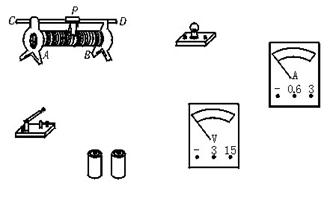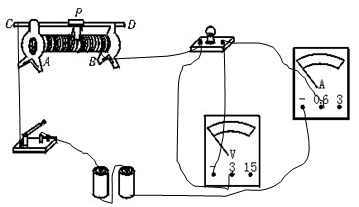下图是用伏安法测量小灯泡电阻所要的器材:

(1) 请连好实物电路,要求滑片P向B端移动时灯泡变亮,并画出相应的电路图;
(2)闭合开关之前,滑片P应移至___________(填A或B端);
(3)小华在做该实验时,观察到电流表的示数变大时,电压表的示数减小,其原因可能是______________________;
(4)本实验中滑动变阻器的作用是___________ ___________。

(2) A (3) 电压表与变阻器并联
(4) 保护电路和改变电路中的电流
题目分析:(1)滑片P向B端移动时灯泡变亮。就是电阻变小,如上图
(2)为保证电路安全,连接电路时开关应断开;滑动变阻器接入电路的阻值应为最大阻值,所以应滑向A端
(3)的示数变大时,电压表的示数减小,其原因可能是电压表并联在了滑动变阻器两端。
(4)伏安法测电阻,滑动变阻器应与被测电阻串联,一方面保护电路,另一方面可以改变被测电阻两端的电压。电路中的电流
点评:本题考查了测小灯泡电阻的实验,涉及到了电路的连接,电路故障确的分析。元件的作用,是一道电学基础型实验题。
